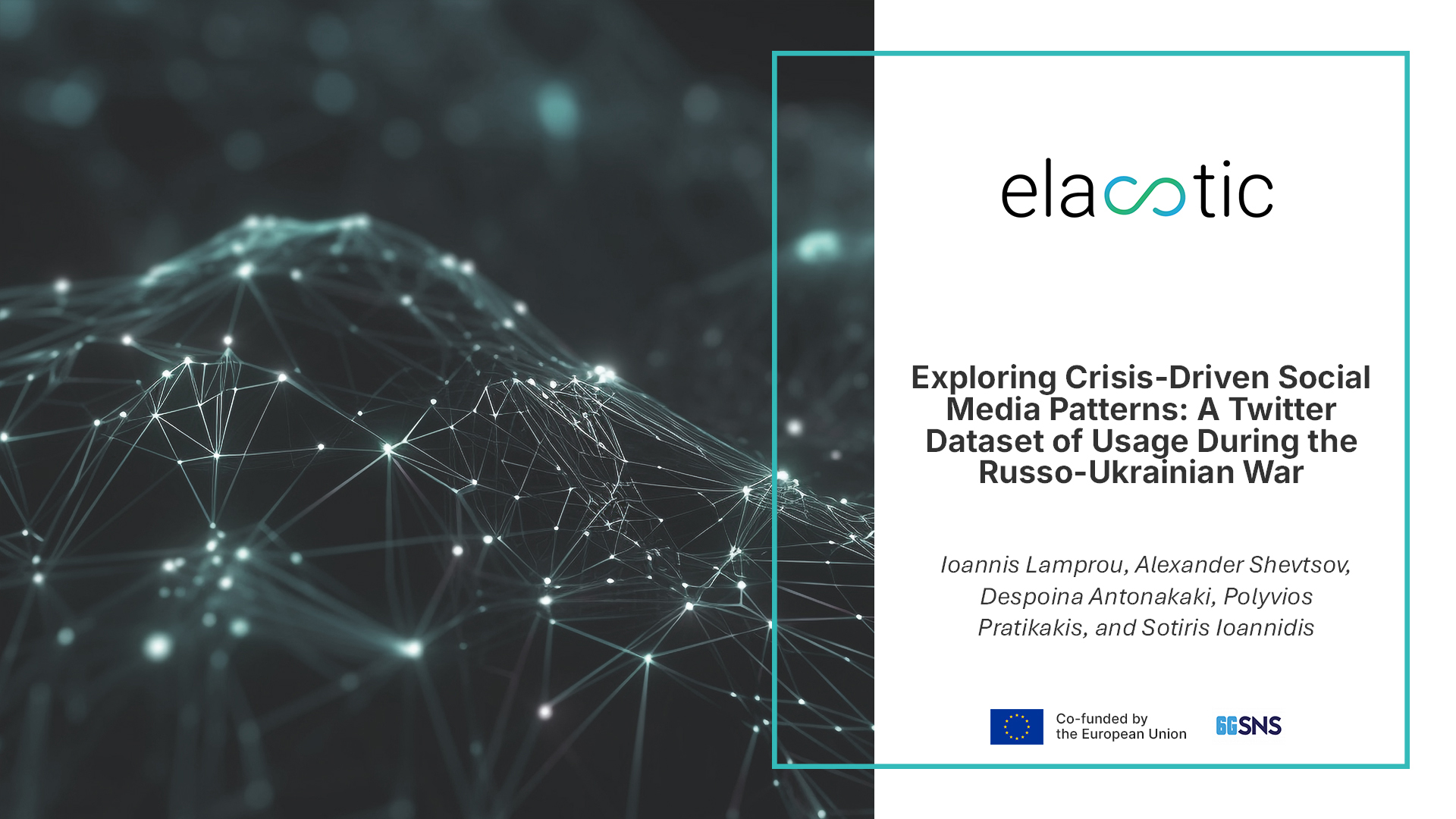New Publication: Exploring Crisis-Driven Social Media Patterns: A Twitter Dataset of Usage During the Russo-Ukrainian War

A new study authored by Ioannis Lamprou, Alexander Shevtsov, Despoina Antonakaki, Polyvios Pratikakis, and Sotiris Ioannidis examines how social media activity evolved during the Russo-Ukrainian War. The paper, titled “Exploring Crisis-Driven Social Media Patterns: A Twitter Dataset of Usage During the Russo-Ukrainian War,” was presented at ASONAM 2024 and contributes to a deeper understanding of online discourse during times of crisis.
The research is a collaboration between the Technical University of Crete and ICS-FORTH. Using the Twitter API, the team collected over 127 million tweets from nearly 11 million users between February 2022 and June 2023. Their aim was to identify trends in public sentiment, detect potentially malicious activities, and explore the use of Twitter for military-related information gathering.
Research Focus
The study applies a multi-faceted methodology across several areas:
-
Sentiment Analysis
The researchers used the multilingual transformer model XLM-RoBERTa to analyze sentiment in tweets related to Ukraine, Russia, and their political leaders. The analysis revealed generally higher positive sentiment towards Ukraine and President Zelenskyy. -
Topic Modeling
By applying BERTopic and multilingual embeddings, the team identified key topics discussed on Twitter and compared them with mainstream media narratives. Their findings show a strong overlap, though user-generated content also surfaced additional themes, including commentary and firsthand reports. -
Toxicity Detection
A portion of the analysis focused on tweets from suspended accounts. Using the Detoxify model, the authors found that only a small percentage of these tweets were toxic, suggesting that other, less visible factors may contribute to account suspensions. -
Military Intelligence Extraction
The study introduces a pipeline for detecting military-related tweets, including mentions of troop movements and weaponry. This was achieved using a customized Named Entity Recognition (NER) model trained on publicly available military datasets.
Findings and Observations
-
Spikes in Twitter activity closely aligned with major news events, such as missile strikes or symbolic moments like Ukraine’s Eurovision victory.
-
Suspended accounts were not consistently associated with high toxicity levels.
-
Military-related information—sometimes including images and locations—was shared widely on the platform, underscoring the role of social media in open-source intelligence.
-
Spam and bot activity exploiting war-related hashtags to promote unrelated content (e.g., NFTs or cryptocurrency) was also detected.
Access and Further Information
The full publication and supporting materials are available on Zenodo.
Supporting Projects
This publication is supported by the ELASTIC Project (Grant Agreement No. 101139067), GREEN.DAT.AI (Grant No. 101070416), and REWIRE. The study aligns with ELASTIC’s mission to explore AI-driven solutions in critical domains, including information analysis during conflict scenarios.
